Cars That Time Forgot: Opel GT
Opel had a problem in the mid-1960: Its cars were terminally dull. Sure, the German company was far from unique in this respect, but unlike many of its rivals, Opel decided to do something about it, and that was to inject some sex appeal into the range.
The first signs of Opel’s ambitions were seen at the 1965 Frankfurt motor show, when the company unveiled an experimental coupe. Called simply ‘GT’, this rakish sportster was nothing more than a humdrum Kadett underneath (albeit with a Rekord engine), but ex-Corvette designer Clare MacKichan did a great job of coming up with the lines for Opel’s first two-seater sports car since 1924.

Despite constant denials, Opel planned all along to create a production version of the GT, but it kept its powder dry for several years, claiming that the GT was nothing more than a show car. However, everyone assumed that the concept would reach production in some form, probably with a fiberglass body shell, so it was no surprise when in 1968 the GT burst onto the scene in steel-bodied form, a year before Ford’s Capri did the same. While the Capri became an instant classic and lasted for three generations over a 17-year production run, the GT was killed off after just five years, and it is now largely forgotten.
Intended to be a sports car for the younger driver, and marketed with the slogan “The first common market sports car,” the Opel GT could be ordered with a 1078-cc engine that pushed out just 67 hp. But few chose this route. Instead, most went for the 1897-cc alternative that provided a marginally more enticing 89 hp. Even with this engine the GT was no ball of fire; it got to 60mph from stationary in a shade under 10 seconds and topped out at 112mph.
Up front there was independent suspension, while retractable lights (which swiveled into position) boosted the car’s sporting credentials. The floorpan, engine, gearbox, brakes, and suspension were all taken from the Kadett or Rekord, and while 1.1-liter editions had smaller brake drums at the back and a lower final-drive ratio, both models had identical bodywork and trim. Standard fare was a four-speed manual transmission, but 1.9-liter GTs could be ordered with a three-speed automatic instead.
As soon as the GT went on sale, it was a hit. Opel had planned to build 60 cars per day, but production quickly doubled, which was easier said than done. Parisian company Chausson produced the body shells, while Brissonneau & Lotz, also based in Paris, was commissioned to take care of body trimming and painting. When the GT proved to be such a hit, Opel had to lend a hand by also finishing cars in its factory in Bochum, Germany.
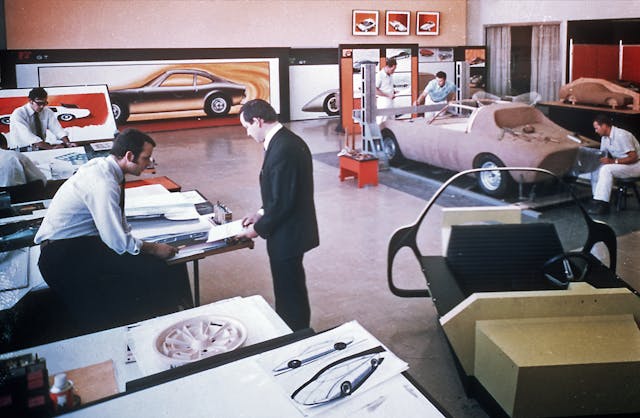
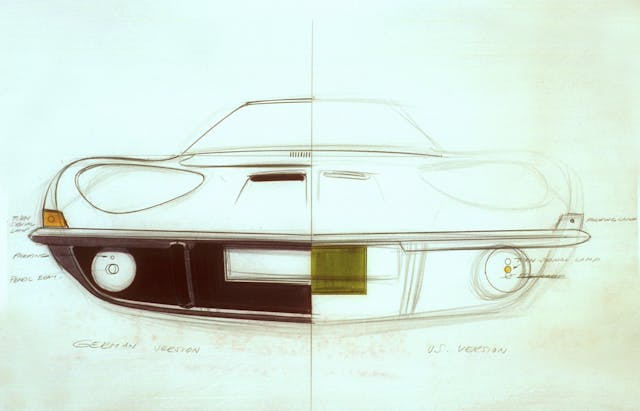
Part of the reason for the GT’s early success was its availability in the U.S., where it was sold through Buick dealers. Differences on the theme were minor between Federal and European variations; U.S.-spec cars usually lacked anti-roll bars and a heated rear window, for instance. European cars could be specified with a radio, three-speed automatic gearbox, fog lights, and a passenger-side door mirror, but available on both sides of the Atlantic was a ZF limited-slip differential, although not that many buyers paid the extra for one.
Although the GT was billed as a 2+2, the back seat wasn’t a place in which anyone would want to spend a significant amount of time. At a push you could just about squeeze one passenger in sideways, behind the high-backed front seats, and as if that wasn’t enough, there was no trunk lid or tailgate. Instead, any luggage had to be fed into the cargo area via the back seat. It wasn’t as though there was much carrying capacity anyway; the spare wheel took up most of the available space.
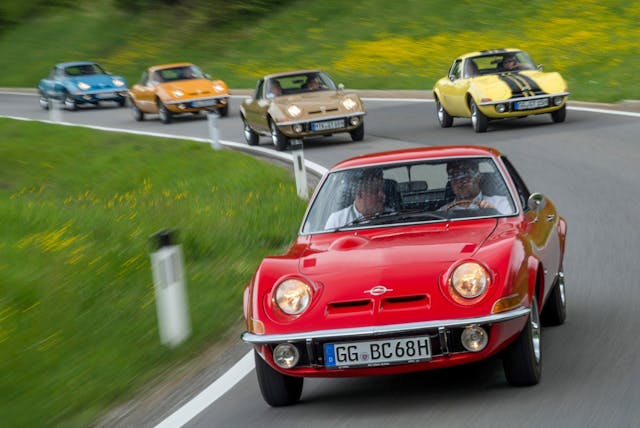
When Motor tested the GT in March 1969, writer Paul Frére noted: “The GT is extremely well behaved and should go a long way to change public opinion about the roadworthiness of Opels. With radial tyres, good weight distribution and rather stiff springs, both handling and roadholding are excellent. On faster bends the car is almost completely neutral and cornering speeds quite high. The light and very positive rack-and-pinion steering combine to make up a car which is extremely pleasant and enjoyable to drive.”
Sales ticked over quite nicely at first, but by 1971 demand had started to wane. In an attempt to boost interest, Opel introduced the cheaper GT/J, with simplified instrumentation, trim, and exterior brightwork. It came only in 1.9-liter form, the 1.1-liter engine having been canned by this point, due to a lack of demand. The GT/J helped to boost sales a little, but the days of Opel’s affordable sports car were numbered.
Tougher U.S. impact rules led to the GT’s demise in 1973; it wasn’t worth it for GM to engineer the car to pass, as sales had slowed to a trickle. Of the 103,463 GTs built, by far the rarest was the 1100, with just 3573 examples made. The GT/J was the next rarest, with 10,760 built, while the 1900 GT accounted for the bulk of production, with 89,130 rolling off the production lines.
That wasn’t the end of the GT brand, though, because it was revived in 2007, for an all-new model that would be sold in the U.S. as the Pontiac Solstice and Saturn Sky. GM would revive the GT name once again on a 2016 concept, but now that Opel is part of Stellantis, the arrival of yet another GT seems highly unlikely.
***
Check out the Hagerty Media homepage so you don’t miss a single story, or better yet, bookmark it. To get our best stories delivered right to your inbox, subscribe to our newsletters.
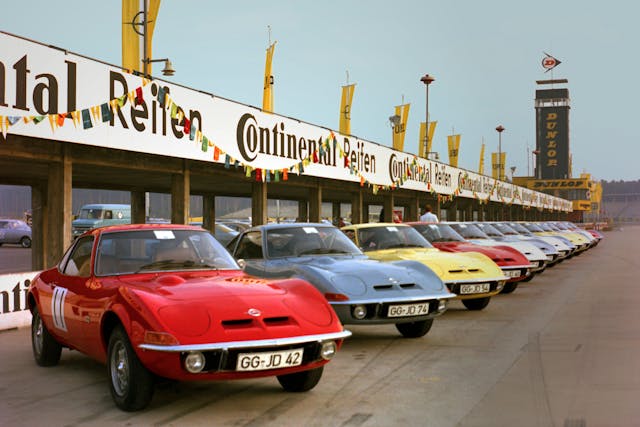
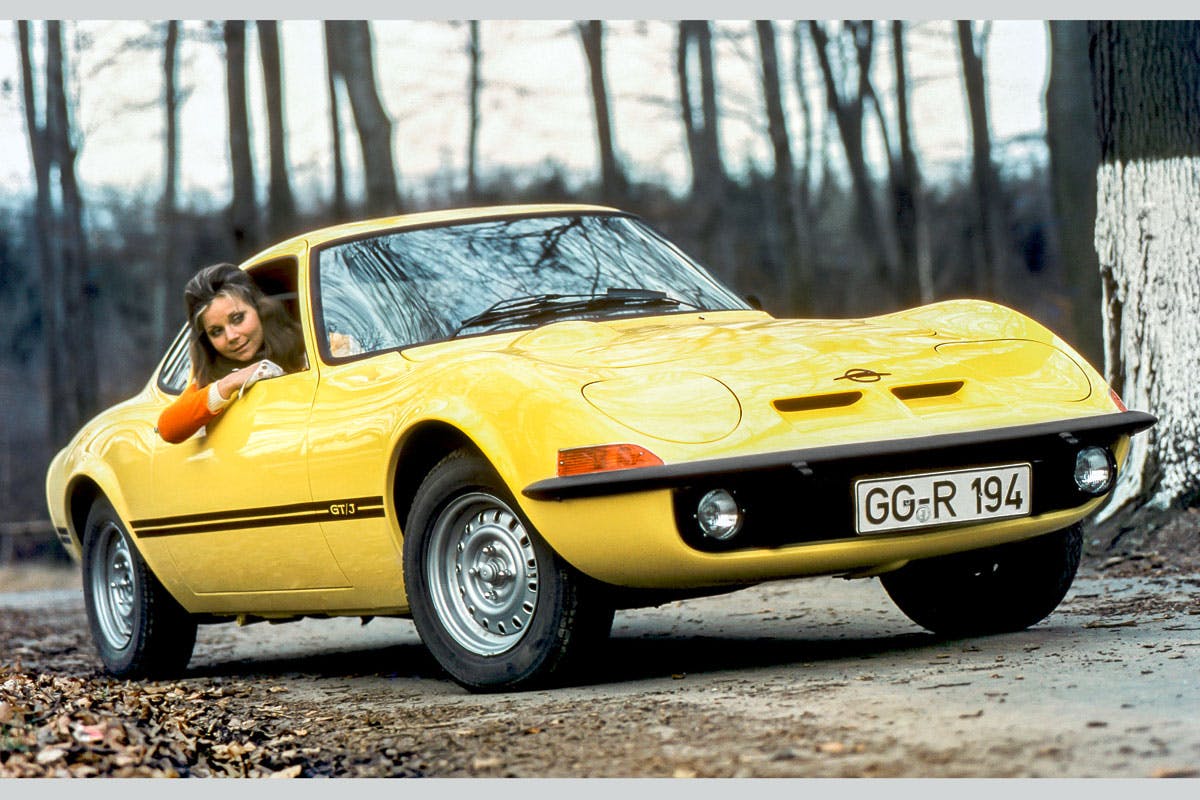
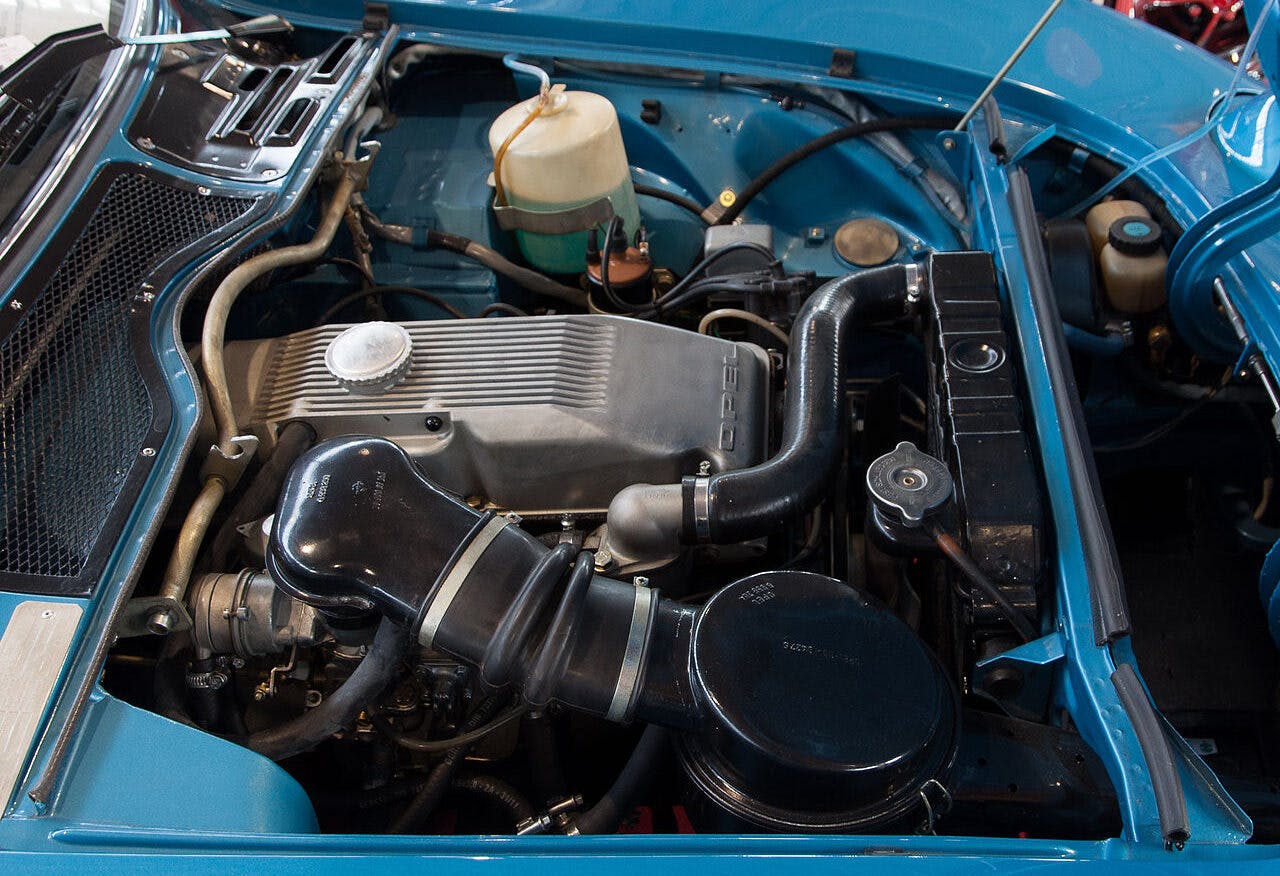
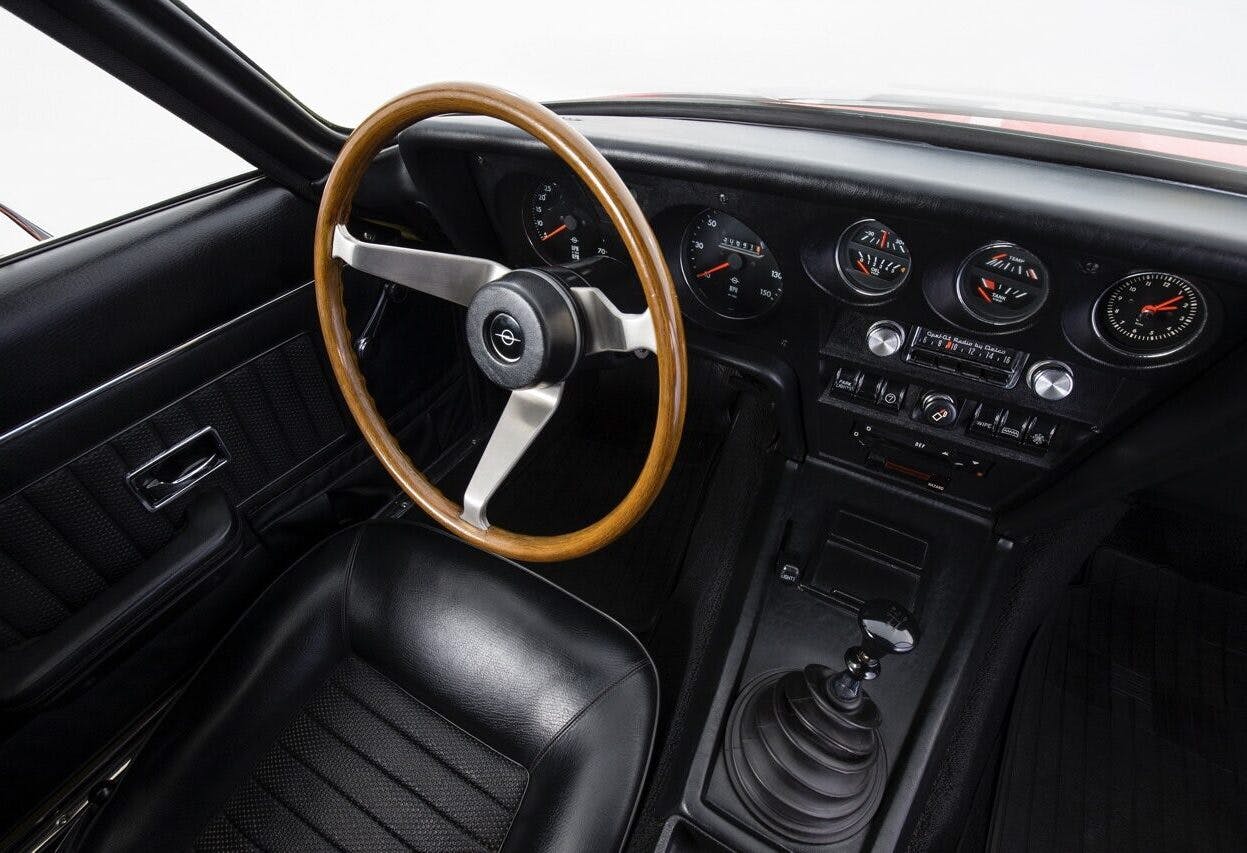

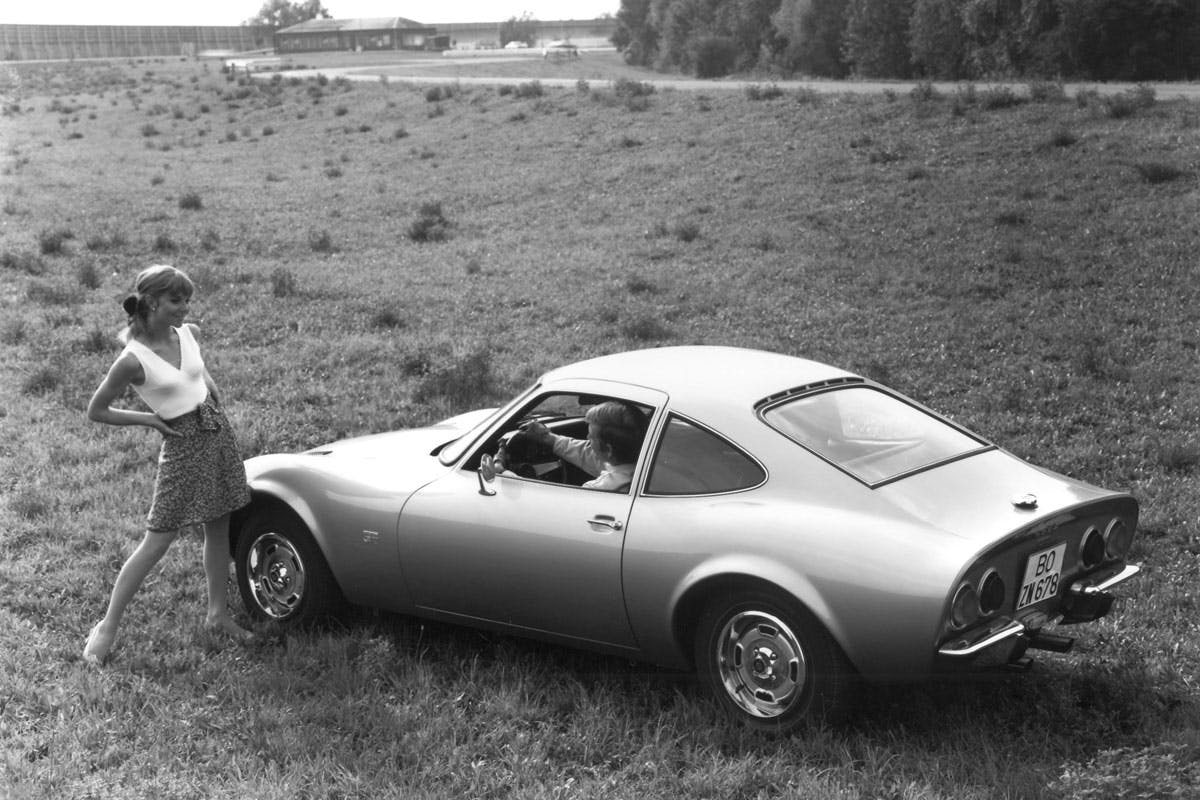
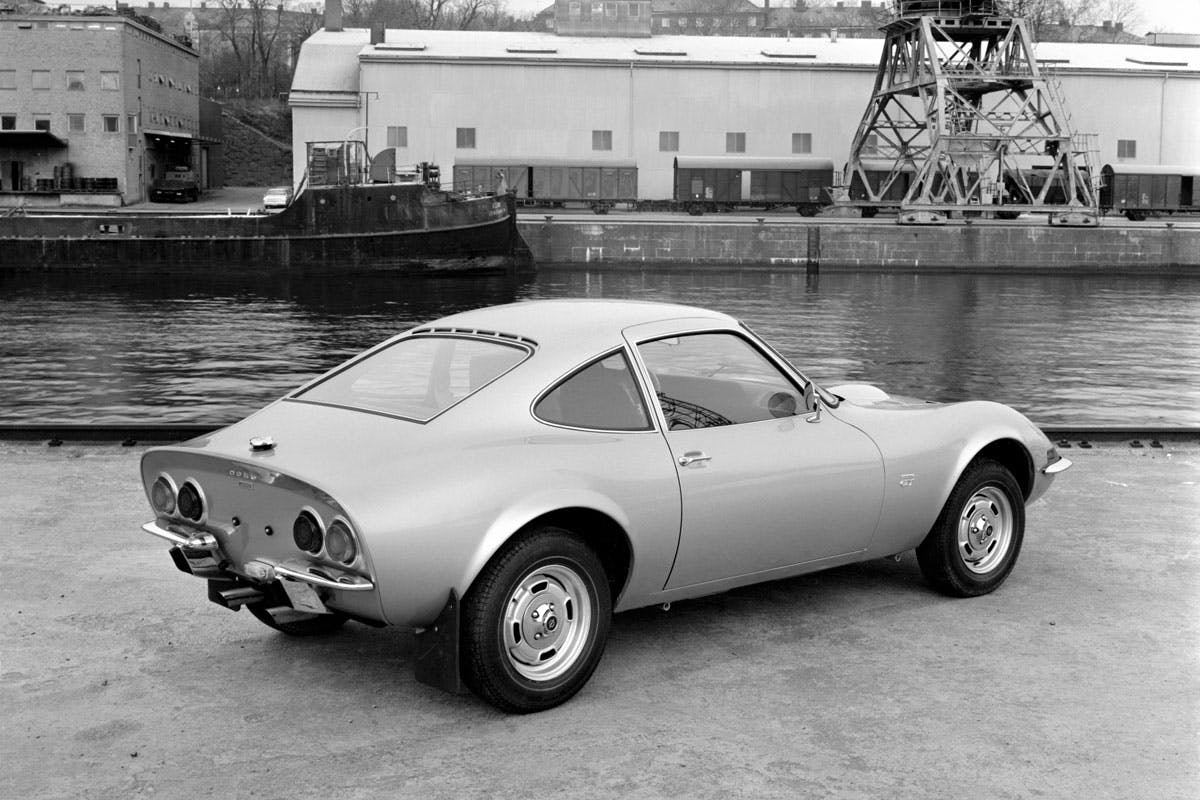


In late 80s, just out of college and living in so-cal. Bought an Opel GT cheap, did some minor repairs and got it running decent. It was pretty gutless, but a fun car to drive. At that time they were very hot item for Germans to buy a rust free US model and export back to Germany. Made a few hundred and was happy.
I thought hearing that windshields for the GTs are very hard to find, as in no new ones and you have to find a used one. Anyone confirm this? Besides the rust repair, not being able to get a windshield would make for tough project completion.
I saw one in a local Saturday night when car guys got together. It had a Buick aluminum 215 ci. Aluminum engine, but what made it really interesting was the owner put on a fuel injection system from an English Land Rover. They had bought the engine design from GM and added the injection system. It must have been quite the driver in that light a car!
Land Rover bought the design, not the owner of the Opel, just for clarification.
In the mid ‘70s I was in the Air Force and I hung out with car guys like myself. We had Mopars (me), Fords, and GMs, even a Javelin. And one guy had an Opel GT. Low horsepower? Yeah I guess so, but that car was a real hoot to drive.
Opel GT was a pretty well built car. Worked with a kid who hit a bridge abutment with his to avoid a head-on. The doors still opened as well as the hood. It ripped the right front control arm and pushed the tire into the back of the wheel well. He drove it home that way. We dropped the front suspension (cross leafspring and subframe held everything). Had to put a jack between the frame rails to get the holes to line back up, but he said it handles better after the wreck. Engine was n’t the most powerful by still sprightly.
As everything today has an LS swap kit available, the sixties and on had garage installed Chev power. Coming from the idiot fringe our power upgrade for the Opel was a small block Chev. No easy install but it was quicker! It also required a roll cage to keep the body stiff enough for the doors to open and close.
Our next victim was a 240Z Chevrolet. Given that the small block fit in easily, and weighed less than the Datsun six, our team of lunatics used a 454 big block. A machine shop down the street made narrowed rear axles by the dozen. IRS was considered over rated in the 70’s, as was braking. Every import seemed to be looking for a small block back then. We referred to it as a “Detroit Tune-Up”.
No imported car was safe.
I had a red ’70 GT with the 1.9 engine when in college. I used to rally and autocross it on weekends. I installed Maserati airhorns to replace the feeble Opel OEM horns and some Lucas Flamethrower driving lights too. What fun! Not a speed machine, but really fun to drive. Girlfriends loved the GT’s sleek styling and liked being photographed with it! I also remember completing fequent repairs, for many odd items seemed break much of the time. However, I still loved driving that sweet little car.
Nowadays (in the rare times I spot a surviving Opel GT) the owner and I end up exchanging horror stories about emergrncy roadside repairs we braved just to get home. I always carried a spare set of the fragile black rubber donut-shaped exhaust system hangers because they didn’t last long and broke at inopportune moments. The engine’s solid lifters and short-lived spark plugs also required frequent adjustment and attention. My GT provided a memorable chapter in my automotive education .
I got an Opel GT the summer after high school graduation in 1979 and drove it to college from Colorado. Great car, but that winter break I found a 1969 MGB roadster similar to one I had owned in high school and replaced the GT for a car with a soft top which I had been missing. I still have that car. My dad was a big GM collector and kept the GT for about 30 more years so I got to see it often. It sold to a young man in Louisiana who was extremely elicited to get it which is what you want for a car you have cherished.
Read the article & the comments… some observations:
Rarest of Opel GT’s would be a 68 w/ 1.1 engine. Only year with split front bumper & only 31 (all 1.9’s) made it to the USA out of 121 made although some records say 541 & 12 made with the 1.1 engine. That would be the holy grail of Opel GT’s to find, if it exist! In 1971 for emission reasons, the engine was de-tuned and had the compression dropped from 9:1 to 7.3:1, causing a loss of over 20 HP from 102 HP. Not sure where the writer got the info on the GT being a “2+2” but there was no back seat. Some people have “padded” the package shelf to make a “kiddy seat” witch was even smaller if the car had AC as the blower motor was back there. There were no convertibles made but the factory did produce a few “Targa Top” cars for promotion only. People have made convertibles, Targa’s, Gull Wings, & many have dumped a V6/V8’s in them. Some quite nicely done & some really bad! The real beauty (& fun) of the GT is the weight distribution that is very close to 50/50 because the engine sits behind the front axle. This is why they handle so well & it’s very much like driving a mid-engine automobile. Getting the stock “de-tuned” 1.9 back to snuff is really not hard. My 73 has a mild cam, High compression pistons, bigger valves, a Weber set up, fatter 15”wheels & tires + some suspension tweaks that make it a hoot to drive while still looking mostly stock. It will (and has done) 120 MPH easy. As for “forgotten” … I don’t think so. Check current prices on Bring A Trailer. I believe you will find an original all stock example recently sold for $40k. I have turned down a solid offer of $35k on my resorted low mileage 73. Having too much fun driving it!
Definitely NOT a 2 + 2! There is no pretense of a rear seat—its a plywood platform.
And the floorpan is NOT the same as a Kadett. The engine is set back quite a bit; the pulleys are near the front axle centerline. This is one of the few production cars with near 50/50 weight distribution.
With the torque tube rear axle and the engine setback, the driveshaft is about 12” long.
Quite a different experience than most of the comments. Bought a new one in 73. Compared to a TR6, Fiat 124 Spyder, or 240 Z of the era, it was a dismal ‘sports’ car. Transmission tunnel could fry your leg. it was inexpensive however and showed it. Without doubt my worst purchase ever and I’ve owned dozens of cars.
Owned 2 of these “tuna cans on wheels.”
“The sports car for the common market” just might be the sexiest slogan ever written. It puts “Somewhere west of Laramie…” right in the bin.
WHILE IN HIGH SCHOOL AUTO SHOP THE TEACHER ASKED IF ANYONE WANTED TO PICK UP SOME PARTS AT THE BUICK GARAGE? I RAISED MY HAND AND WALKED (NO CAR YET) ABOUT A MILE DOWN TO THE BUICK GARAGE. ON THE RETURN TRIP IT STARTED TO RAIN. A NICE SALESMAN ASKED IF I WANTED A LIFT. HE CAME AROUND FRONT WITH A YELLOW OPAL GT. HANG ON KID I’LL SHOW YOU WHAT THIS THING CAN DO, AND THAT HE DID. ALWAYS THOUGH IT LOOKED LIKE A MINI VETTE. MUCH BETTER CAR THAN THESE NEW JELLY BEAN STATION WAGONS MOST FOLKS DRIVE!
My brother bought a 71 dealer demo driven by the store owners wife upon his arrival home after getting out of the marines.. Was orange with a stick shift. Such a cool little car..
When those were around I worked in a Buick Dealership body shop in Fayetteville NC . The 2 things I remember was that they had issues with the cable lift for the side windows always coming off the rollers and the headlights being problematic . I fixed a bunch with those issues .
The biggest thing I had an issue with was ,,,finding the darn things parked amongst all the Electra 225’s , it was like finding a needle in a haystack sometimes finding it parked between all those Luxo Liners in the lot !!
They were a bit of a head turner at the time but opening the hood was indeed a bit of a disappointment to me not seeing a 455 tucked in there.
I got to drive a few and they were defiantly fun to drive once you got them up to speed and if you could actually find any twisty roads in the Fayetteville area to take advantage of there corning ability, they did handle pretty well.
I really liked the looks but the lack of power was what turned me off with them , but back then I was sporting a 63 Nova with a supercharged Big Block pushing well > 700hp so most anything else on the road at the time was a let down power wise too . Even the hottest Vette’s in the area would quake in their tires when I came cruising around,,,
I think the last one I saw was about 8-10 years ago and it was a pretty rough example at that, but it still brought a smile to my face .